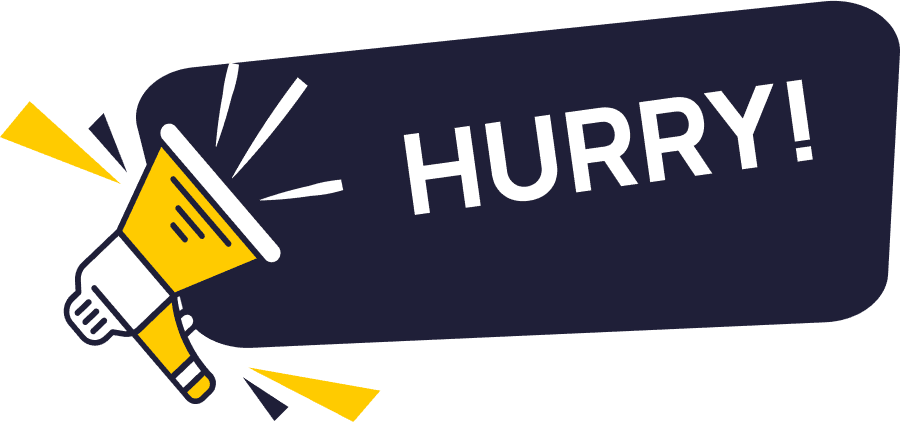Jun 7, 2025
Email Closing Lines
79 Clever, Professional, and Friendly Email Closing Lines to Copy

Closing Lines for Formal Emails
Formal emails are straightforward and follow a distinct structure. There’s the email greeting, followed by the main email body, and then the closing line.
The closing line should reflect what type of formal email you’re sending, your relationship with the recipient, and the overall tone.
Here are some of the options you can try.
I am looking forward to hearing from you.
Looking forward to collaborating with you.
Is this something you’re interested in right now?
Can I send you more information about…
If you have any questions, please do not hesitate to contact me.
Looking forward to discussing {{topic}} further.
If there’s anything I can assist you with, please don’t hesitate to reach out.
Thank you for your consideration.
Looking forward to the next steps for…
Hoping to hear from you soon.
Formal email closing lines often indicate a continuation. This could be to continue a discussion, request more information, or take the next step in your correspondence.
Cold Email Closing Lines
Closing lines for cold emails depend on the email segment you’re reaching out to. It could be:
Formal
Informal
Semi-formal
The key is personalization, testing various strategies, and monitoring sales email metrics to determine which closing line works best for each segment. Cold email closing lines can be categorized into three main types:
Interest-based
Direct CTAs
Value-based
Interest-based closing lines gauge prospect curiosity, direct CTAs give clear next steps, and value-based closing lines solve needs or pain points.
Interest-Based Cold Email Closing Lines
Thanks in advance.
Looking forward to hearing your input on…
What do you think about {{topic}}...
Looking forward to doing business with you.
Direct CTAs
If this resonates with you, feel free to schedule a meeting here {{insert calendar link}}.
Please let me know when it might be a good time to schedule a call…
Let’s set up a time to talk. Is {{time and date}} good for you?
Value-Based Closing Lines
I have {{resource}} that helped me solve {{pain point}}. Would you like me to send it to you?
Our team developed a tailored strategy for {{company}}. Open to hearing us out?
I’d love to send you our case study on {{topic}}. Let me know if that interests you.
Professional Email Closing Lines
Professional emails are those you send to:
Coworkers
Supervisors
Potential job opportunities
Depending on your relationship with the recipient, they can be formal or casual.
When writing professional email closing lines, think of your purpose.
Do you want to continue a discussion?
Is there new info that I need?
Or am I just expressing gratitude?
For example
Looking forward to your feedback on the proposal discussed.
If you have any questions, don’t hesitate to contact me at any time.
Thank you for considering my application.
I’m looking forward to the potential opportunity of working with {{company name}}.
Your continued support is highly appreciated.
We anticipate your approval to go forward with the project.
Thank you for your attention. I eagerly await your reply.
Thank you for considering our proposal. We look forward to your response.
Please find the attached report. If you need additional info, don’t hesitate to reach out.
I appreciate you taking the time to meet us. Here is a quick summary of our discussion.
Thank you so much for connecting! I look forward to speaking with you on [date and time].
I’ve sent over [materials you discussed]. Please review by [date] and let me know if you have any questions.
Thank you again for meeting with me today. I look forward to learning about the next steps of the interview process.
I look forward to joining the team! I’ll see you for my first day on [date].
Thank you again for giving me more information about the opportunity! I’ve attached my resume and will contact you by [date] to follow up if I haven’t heard from you by then.
Please let me know if you have any questions by replying to this email or reaching out to me on Teams.
I look forward to reading your responses in the attached sheet below on Friday. I’ll be in touch about next steps the following week.
For most professional email closing lines, you want to have a good blend of casual, polite, and formal. If you’re already close with your recipient, you can opt for a more casual approach.
Casual and Informal Email Closing Lines
Don’t mistake casual closing lines for informal closing lines. You must still maintain a professional demeanor, especially when emailing:
Colleagues
Clients
Prospects
This doesn’t mean you can’t use informal closing lines. It ultimately depends on the nature of your relationship with the recipient and what type of email you’re sending.
Examples Of Casual Email Closing Lines
Looking forward to our next chat.
Keep me posted.
Have a great weekend.
Feel free to contact me anytime.
Let’s talk soon!
Examples Of Informal Email Closing Lines
Say hi to your dog for me!
Catch up soon!
Stay safe, talk soon.
Good luck on {{milestone}}.
Sorry for the trouble.
Thanks a lot/a million/a ton...
Hope the above is helpful to you.
Good luck with….
Let me know if you run into any problems.
Let me know if that's ok
I'll phone you…
Speak to you soon/later/on Monday/next...
Write soon!
Say “Hi” to me/Please send my best to /Send my love to ...
If you're emailing a friend, you can use informal closing lines. But if you’re emailing a friend who also happens to be a co-worker about something work-related, go for the casual closing lines.
Business Email Closing Lines
Business emails are direct, concise, and formal. Your email closing lines should reflect that as well. The goal is to convey respect, gratitude, and professionalism in your correspondence.
Business email closing lines focus on continuing ongoing projects, encouraging timely replies, or striking a balance between gratitude and professionalism.
Here are some examples
Looking forward to the possibility of collaborating with you soon.
We appreciate your business and are here to assist you with whatever you need.
Thank you for your interest in {{your product or service}}.
Hoping the attached proposal meets your business needs.
Let’s touch base on {{date}} to discuss the proposal in depth.
Thank you for your patronage of our service. We value your support.
Looking forward to your reply.
Your feedback is very much appreciated and something we look forward to hearing.
We’ll be in touch with more details soon.
We’re excited about the potential partnership between {{your company}} and {{prospect company}}
These email closing lines might be too formal for cold emails. Instead, use these closing lines when emailing a business you’ve already established a consistent correspondence with.
Examples Of How To End An Email
The following example scenarios can help you craft an email ending that reflects your professionalism and attention to detail:
When applying for a job: Thank you for considering me for this position. I look forward to hearing from you! Sincerely, Mohammad Rahim Experienced Sales Professional 123-555-4567
After a phone screening: I’ve attached my portfolio for your review. Please let me know if there’s anything else you need. Warm regards, Erica Garza Web Designer & Illustrator 456-555-1234
When responding to a meeting request: I look forward to meeting with you next Monday. Thank you, Jeff Richards, Social Media Marketing Professional www.portfoliowebsite.com 789-555-4567
After completing an interview: I look forward to the next step in the process. Best, Anika Patel Full Stack Software Engineer www.websitenamehere.com 111-555-6789
When accepting a job offer: I look forward to discussing the details and next steps! With gratitude, Yung Lee, Experienced Finance Professional 678-555-6789
In a Networking Message: I’d love to connect over the phone to learn more about the position. Are you available anytime next Monday, January 2nd, from 9 a.m. to 3 p.m. MST? You can reach me at (123) 456-7890. Best, Charlotte Smith Example University Class of 2026 (123) 456-7890
After a Phone Screening: Again, thank you so much for taking the time to speak with me today. I’ve attached my resume and online portfolio for your review. I look forward to hearing from you soon — I will follow up on [date] if I haven’t heard from you by then. Thank you, Michael Johnson https://www.linkedin.com/in/michael-johnson-1
After an Interview: Thank you again for your time today. If you have any additional questions, please do not hesitate to reach out. I look forward to hearing from you and will follow up on [date] if I don’t hear from you by then! Sincerely, Isabella Rodriguez Data Analyst, Brooklyn, NY
When Accepting a Job Offer: Thank you so much for the opportunity, and I look forward to working with you soon! I’ll see you on October 2nd in the New York office. Cheers, Shayna Coleman (098) 765-4321
Collaborating With a Coworker: Please let me know if you have any questions. I’m happy to jump on a call or discuss this further in Slack! Best, Caitlin Imler Program Strategist Los Angeles, CA
Sending an Update to Your Team: Please review the above and let me know if you have any questions or feedback by [date]. Looking forward to hearing from you! Best, Lucy Grose, Chief of Staff, Company Z, Madison, Wisconsin
Working with a Client: I’m confident that our approach can deliver the brand awareness results you’re looking for. Please let me know if you have any questions about the proposal, which I’ve attached below; I’m happy to answer via email or in a follow-up call. Thank you, Fiona Customer Success Manager fiona.a@companyz.com (145) 321-456
Following Up After a Meeting: Thank you again for your attention and engagement during today’s presentation. In addition to the action items I’ve outlined above, I’ve attached the slides for further reference. Please let me know if you have any questions. Best, Julia Senior Designer, Company X

Related Reading
• Unprofessional Email Address Examples
• Omnichannel Lead Generation
• Sales Funnel Email Sequence
• Nurture Email Sequence
• How to Change Email Signature in Outreach
• Email Outsourcing
• Email Management Tips
• Find Email of Twitter Account
• Partnership Email Template
• Nudge Email
Email Closing Lines
4 Major Email Closing Line Best Practices

1. Context is King for Email Closing Lines
The right email closing line depends on:
Your recipient
Your goal
Overall tone of your message
Don’t just stick to one closing line because “studies say this has the highest percentage of conversions.”
If you have a close relationship with your recipient, you can use casual closing lines like “Let’s talk soon.” But if you’re emailing a colleague, it’s better to use a professional closing line.
2. Match Your Email Closing Lines to Your Email Tone
Be consistent with the email’s overall tone. Don’t start an email with a formal introduction just to end it with a casual closing line. You must be consistent in both tone and message. The switch might leave prospects confused. Cold emails and casual emails offer a little bit of leeway here.
These emails are often casual in tone, yet they still convey a straightforward and actionable message.
3. Personalize Email Closing Lines
Personalization helps you stand out and shows that your email is well-thought-out and specifically tailored for each prospect. But you can’t constantly personalize closing lines. In the cases where you can, you should. Let’s say you’re sending a cold email and want prospects to click on your case study.
The closing line could mention how the case study can help solve a prospect’s pain points, address unconsidered needs, or offer DIY solutions to common issues. I can say: “Here’s a link to a case study we did on {{topic}}. We outlined our strategy on how we solved {{pain point}}. Let me know what you think. Looking forward to hearing from you soon, {{your name}}”
4. Base Email Closing Lines on Desired Outcomes
The goal of each email is to provide value. However, you still need to push the needle forward for your business. The best way to do so is by having the closing line emphasize the next steps. If your goal is to get a reply, you can use closing lines that encourage participation, such as:
“Thanks in advance”
“I’d love to hear your thoughts on…”
“Can I send more details?”

Related Reading
• How to Sign an Email Professionally
• How to Cold Email for Research
• How to See if Someone Read Your Email on Outlook
• Sales Accepted Lead vs Sales Qualified Lead
• Email Quote Template
• How to Cold Email for an Internship
• How Many Emails Can Be Sent at Once in Gmail
• Lead Nurturing Tools
• How Long Should a Newsletter Be
• PR Pitch Email Example
• Podcast Email Examples
• Best Sales Acceleration Tools
Email Closing Lines
Start Buying Domains Now and Set Up Your Email Infrastructure Today
At Inframail, we are revolutionizing cold email infrastructure with unlimited inboxes at a single flat rate. We provide Microsoft-backed deliverability, dedicated IP addresses, and automated technical setup to help agencies, recruiters, and SDRs scale their outreach efforts efficiently.
Main benefits of using our service:
Automated SPF, DKIM, and DMARC setup
Dedicated email servers for each user
16-hour priority support daily
Unlike traditional providers that charge per inbox and leave you wrestling with technical configurations, Inframail streamlines the entire process. We handle the complex infrastructure setup, allowing you to focus on reaching more prospects.
Whether you're an agency looking to scale outreach, a recruiter connecting with candidates, or an SDR driving sales, Inframail provides the robust email infrastructure you need without the usual technical headaches and per-inbox costs. Start buying domains now and set up your email infrastructure today with our email infrastructure tool.



